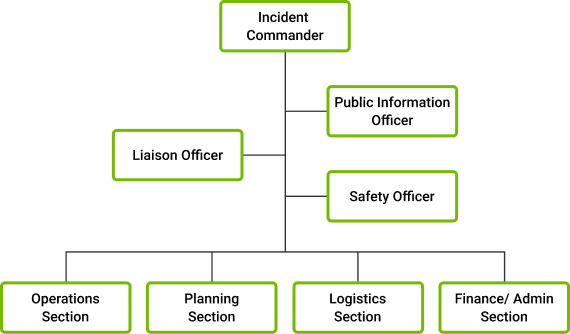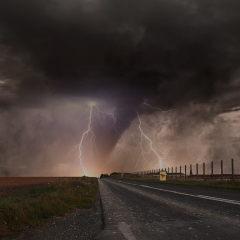
All Hazards Contingency Planning
The planning process is more important than the plan itself.
Every exotic animal owner and operator should have a plan for what to do in the event of an incident. If done correctly, the contingency planning process will result in an action plan to guide your facility through an incident or disaster and mitigate impact to visitors, staff, animals, and the facility itself. The complexity of your plan will be dictated by many factors, including the number and types of species you have in your collection. The more animals you have, especially if they include potentially dangerous species, the more time it may take you to write a plan.
On these pages you will find resources that will give you and your planning team a great foundation to begin the planning process for your facility.
Incident Command System

Every organization or facility should have individuals who are trained to respond to incidents that could occur in their facility. These individuals may take on different responsibilities during an incident by virtue of their daily roles and responsibilities, training, or authority. There should be a structure in place that organizes responders into a framework so responsibilities are understood beforehand.
Why waste time during an incident when this could be figured out ahead of time?
ZAHP highly recommends the use of the Incident Command System (ICS) for incident management. ICS is a flexible, scalable tool that can be used for a range of activities from management of incidents such as animal escapes and weather-related incidents, to organization of pre- planned events such as “Zoo Lights’ or tour events. Most importantly, ICS is the organizational tool used by Emergency Management and first responders including police, and fire departments. Having a basic understanding of this response ‘language’ will go a long way when you are discussing your plans and procedures with these important partners.
ICS Training
Many ICS courses are available for free online via FEMA’s The Emergency Management Institute (EMI) USDA has their staff take a minimum of ICS 100, 200 and 700 to develop a basic understanding .. The training below was developed to introduce ICS to facilities managing exotics and wildlife as part of ZAHP’s Zoo Ready project. This is an ICS 100 course taught by the Emergency Management Institute, but using animal-specific examples. Check it out!
Module 1: This introduction to ICS will demonstrate the utility of this system for coordinated response to many types of incidents.
Module 5: Expanding incidents require more responders. This module introduces the concept of expanding the ICS system for response.
Module 2: This module introduces key concepts and features that are hallmarks of the Incident Command System.
Module 6: So what do I do with this newfound knowledge? This module helps to put it all together!
Module 3: The ICS ‘chain of command’ and ‘span of control’ are explained.
Module 7: This module presents a scenario that will explain how ICS is expanded to meet the needs of complex incidents.
Module 4: This module will introduce the key leadership positions within the ICS structure.
© All rights reserved by ZAHP. No copyright is claimed for government materials used herein. The information here is intended solely as summary information for zoo and aquarium employees and viewers in the general public. It contains recommendations but creates no new legal obligations nor accreditation standards for AZA-accredited zoos and aquariums.



